
Recently, moments of joy and peace are perceived especially acutely. Because there are very few of them in the surrounding space. Travel in Ukraine is worth its weight in gold, because the war has been going on for the third summer.
At the beginning of the summer I was lucky enough to have a special day. When everything coincided. Good weather, good company and an interesting route.
That day we visited two castles in Vyshnivets and Zbarazh, and at the end of the day we walked around Ternopil on foot and by boat... I will start my journey... from the end. Invite you for a walk.
Останнім часом моменти радості і спокою сприймаються особливо гостро. Бо їх дуже мало у навколишньому просторі. Подорожі в Україні на вагу золота, бо війна триває вже третє літо.
На початку літа мені пощастило провести особливий день. Коли співпало все: гарна погода, гарна компанія і цікавий маршрут. І навіть відсутність повітряної тривоги.
Тернопільщина має чим похвалитися! Тут найбільше замків (більшість у стані руїн), ріки і каньйони, печери і пагорби Поділля. Незвіданий край...
У той день ми відвідали два замки - у Вишнівці та Збаражі, а під кінець дня прогулялись Тернополем пішки і на теплоході... Розпочну свою подорож... з кінця. Запрошую вас на прогулянку.


The biggest attraction of the city is the Ternopil Pond. It existed here for many centuries, although it was much smaller. The Seret River flows here.
However, at the beginning of the 20th century, the lake was clogged and overgrown (well, it actually turned into a swamp). It was restored in 1959.
Найбільша окраса міста — це Тернопільський став. Він існував тут багато століть, хоч і був значно меншим. Тут протікає ріка Секрет.
Проте на початку 20 століття озеро було засмічене та заросле (ну тобто фактично перетворилося на болото). Його відновили у 1959 році.

A long time ago, a church rose above the lake. We will start our walk from it.
The first mention of this church dates back to 1570. Later, a defensive bell tower was built.
The Lviv Gate was once located nearby, the city was surrounded by walls. Next was a dam through which you could cross the river (now it is a road between the pond and the river). It was a strategically important place, because it was surrounded by swamps.
Здавна над озером височіла церква. Від неї ми розпочнемо прогулянку.
Перша згадка про цю церкву належить до 1570 року. Проте за переказами тут ще в давньоруські часи існувала інша церква. У 1627 році над церквою побудована оборонна вежа-дзвіниця.
Неподалік колись розташовувалась Львівська брама, місто було обнесене мурами. Далі йшла дамба, через яку можна було перейти річку (зараз це проїзна частина між ставом та рікою). Це було стратегічно важливе місце, адже навколо — болота.

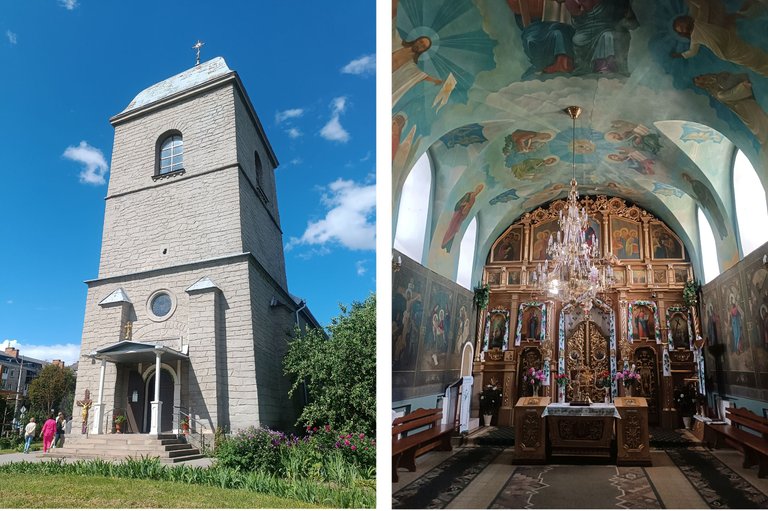

We were lucky enough to go inside. Unfortunately, ancient paintings and icons were destroyed during the Soviet era. They say there were miraculous icons here that disappeared... But now everything has been restored. It is very cozy and calm here, and the thick walls provide coolness on a hot day.
Товсті стіни, невеликі вікна підсилювали оборонне значення святині. З вежі можна було спостерігати за полями поза межами міста і наближенням ворогів!
Зараз церква належить громаді ПЦУ.
Нам пощастило зайти всередину. На жаль, давні розписи та ікони були знищені у радянський час. Кажуть, тут були чудотворні іконі, які зникли... Але зараз усе відновлено.

Now our path lies to the lake embankment. There is a small pier here, from where two ships take tourists for a walk...
On the other side is a beach where you can sunbathe or swim. But that's another time:) And we just admired the pictures of the city and listened to the story of the water. Luxurious clouds over the lake and a gusty wind added to the beautiful impressions.

А тепер наш шлях лежить до набережної озера. Тут є невеликий причал, звідки два теплоходи возять туристів на прогулянку...
З іншого боку знаходиться пляж, на якому можна засмагати на плавати. При бажанні там можна зійти з судна, а потім водним шляхом повернутися назад...
Але це іншим разом:) А ми просто милуватись картинами міста і слухали розповідь води. Ну і як завжди розкішні хмари над озером.




Later, led by a tour guide, they went for a walk in the city center. Mr. Mykola is a man-encyclopedia and I share with you grains of knowledge.
The city was founded in 1540 by Jan Amor Tarnovsky. Although this area has long been inhabited by Slavs.
Tarnovsky built a castle with several towers and a palace on a hill near a river and a pond. But to this day, only a small palace has survived, in which a sports school is located.
Згодом на чолі екскурсовода пішли на прогулянку центром міста. Пан Микола це людина-енциклопедія і я ділюся з вами зернинами знань, які він передав нам.
Місто було засноване у 1540 році Яном Амором Тарновським (Отож, оригінальна назва Тарнополь на честь засновника!). Хоча на цьому місті здавна були поселення.
На пагорбі біля ріки та ставка Тарновський заклав замок з кількома вежами та палацом. Але до наших днів зберігся лише невеликий палац, в якому розташована спортивна школа.



We really liked the square next to the castle. It would be interesting to consider the bushes and flowers in more detail, but we should go further.
Дуже сподобався нам сквер поряд з замком. Було б цікаво детальніше розглянути кущі та квіти, але слід йти далі...



We walked along the ancient street to the monument by Danylo Halytskyi. It was the king of ancient Ukraine-Rus'. He managed to rule the state after the fall of Kyiv from the Mongol invasion in 1240. The western regions of Rus' adopted the tradition of creating a ancient Ukrainian nation and preserved our culture. Danylo's life was unrealistically difficult, he struggled with internal strife and conducted diplomatic negotiations with the Golden Horde.
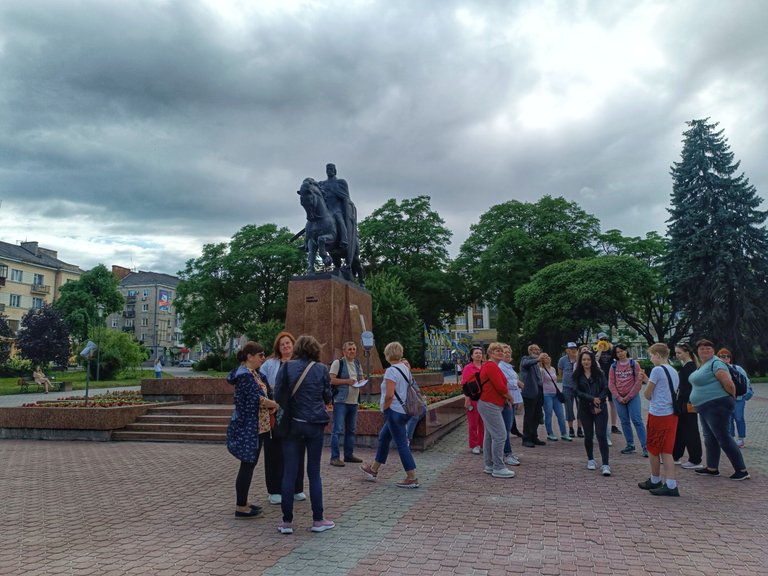
Старовинною вулицею добрели до пам'ятника Данилу Галицькому. Це один з небагатьох королів давньої України-Русі. Він зумів керувати державою після занепаду Києва від монгольської надали у 1240 році. Західні терени Русі перейняли традицію творення нації, зберегли культуру. Життя Данила було нереально складним, боровся з внутрішніми міжусобицями і вів дипломатичні переговори з Золотою ордою.
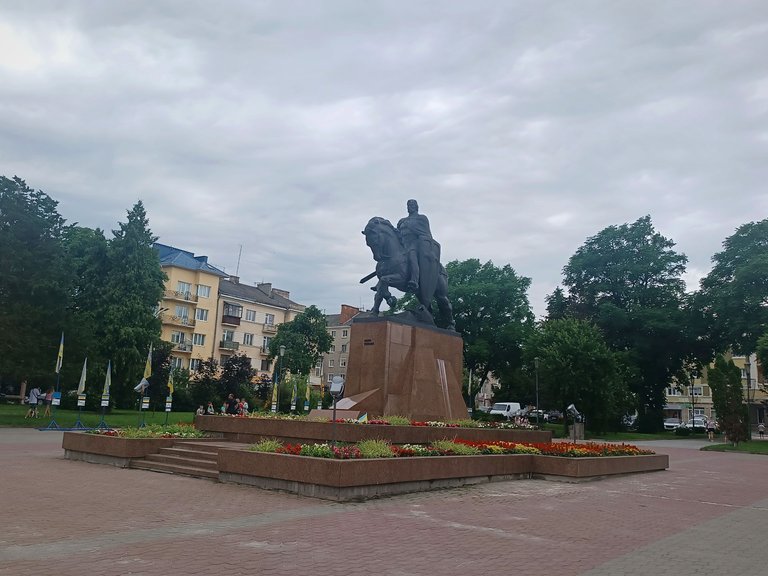



Another temple attracts the traveler's attention from afar. It is not difficult to guess that this is a typical building of the Baroque style. The business card of this cathedral is the completion of two towers. It looks like firs to me.
The temple was built in 1749-1779.
Its founder was Hetman Józef Potocki, and initially the church and the building next to it belonged to the Dominican order. At the beginning of the 19th century, the monastery passed to the Jesuits. Unfortunately, during the Second World War, Ternopil suffered great destruction, in particular, in 1944, this temple was badly damaged. It was rebuilt in 1957, and later the Ternopil Art Gallery was located here.
At the time of Independence, it was handed over to the Ukrainian Greek Catholic Church.

Здалеку привертає увагу ще один храм. Неважко здогадатися, що це типова будівля стилю бароко. Але візитною карткою цього собору є завершення двох веж. Мені воно схоже на ялинки або на верхівки бойківських дерев'яних храмів.
Храм збудований у 1749—1779 роках. Його фундатором був гетьман Юзефа Потоцького і спочатку церква та будівля поряд належала ордену домініканців. У часи Австрії на початку 19 століття монастир відійшов до езуїтів. На жаль, в часи другої світової війни Тернопіль зазнав великих руйнувань, зокрема в 1944 був сильно пошкоджений цей храм. Відбудований у 1957, а згодом тут розташувалась Тернопільська картинна галерея.
В часи Незалежності переданий Українській греко-католицькій церкві.


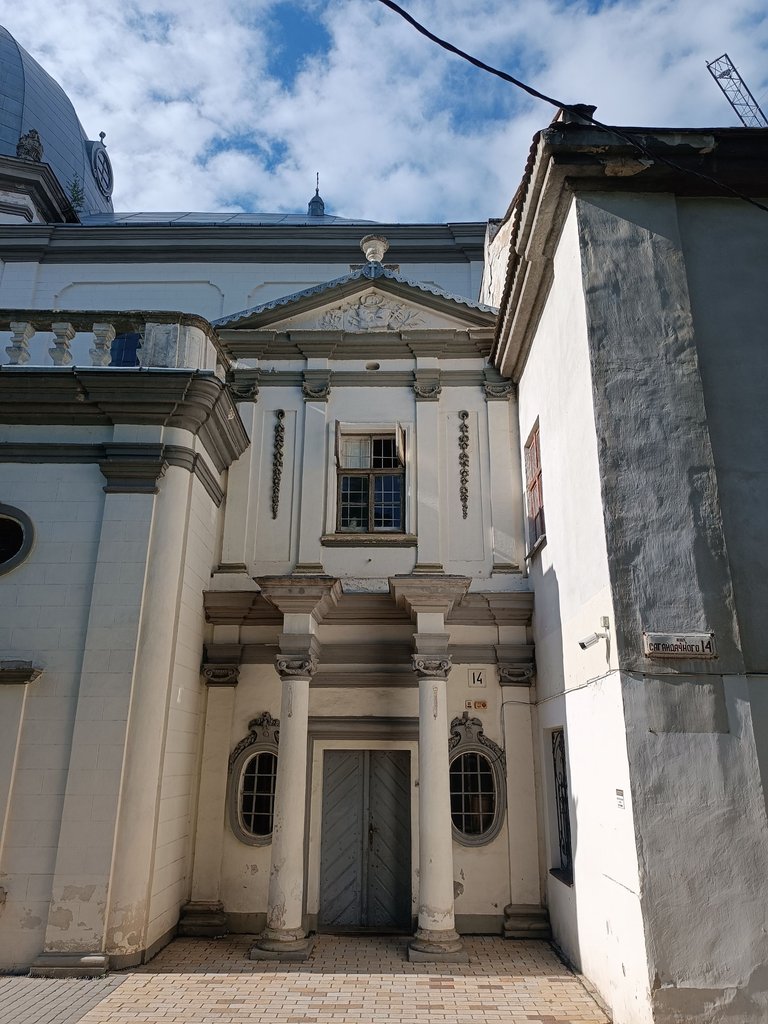
Now prayers are constantly being heard in the cathedral. We managed to inspect the interior before the service. Light tones and bright modern paintings create a feeling of special celebration.
I hope that one day I will be able to get into his interesting dungeons, which have many secrets.
Зараз у соборі постійно лунають молитви. Нам вдалося оглянути інтер'єр перед богослужінням. Світлі тони і яскраві сучасні розписи створюють відчуття особливої урочистості.
Я сподіваюся, що колись вдасться потрапити і в його цікаві підземелля, в яких чимало таємниць.






Walking along the cozy streets of Ternopil...
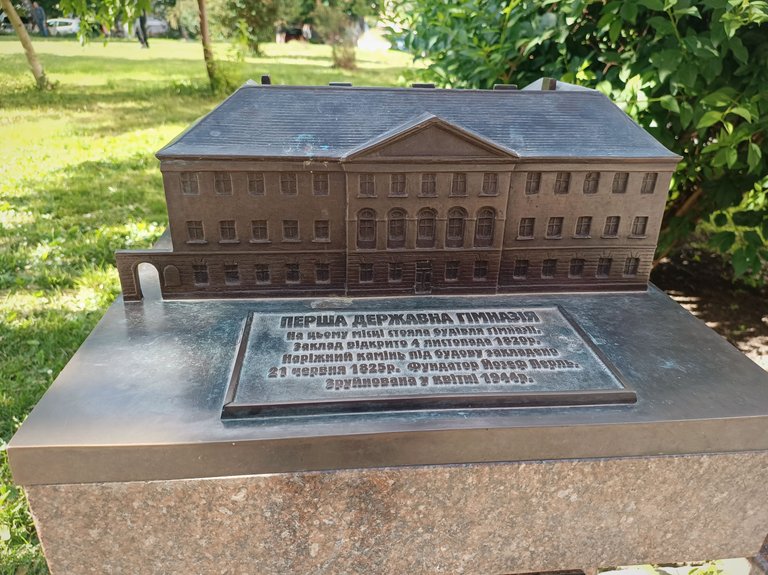
The building of the Ukrainian gymnasium no longer exists, because a bomb fell on it in 1944.


Monument to the outstanding Ukrainian writer Ivan Franko.

This magnificent neo-Gothic church was destroyed by the Soviet authorities.
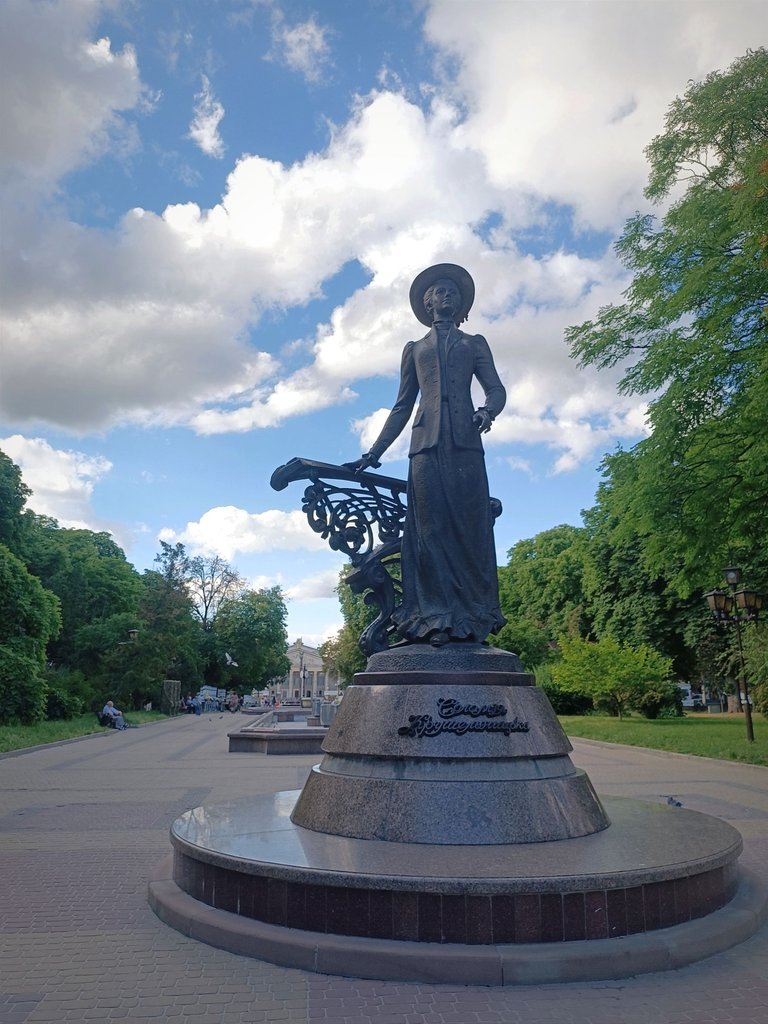
Monument to the world-famous opera singer Solomia Krushelnytskyi, who was born in a village near Ternopil.
Ми підійшли до величного пам'ятника всесвітньо-відомій співачці Соломії Крушельницькій, яка народилася в селі недалеко від Тернополя. Ця жінка виконала чимало різноманітних ролей у відомих операх і підкорила сцени Італії, Німеччини, Польщі та України. Але завжди в її репертуарі було місце для української пісні, народної та авторської.

Our route continues to the central avenue of the city, where the architectural dominant is the theater, built already in Soviet times in the neoclassical style.
Music is playing on the spacious square. A fundraiser for the Armed Forces is underway.
Наш маршрут продовжується до центрального проспекту міста, де архітектурною домінантою є театр, збудований вже в радянські часи в стилі неокласицизму.
На просторій площі лунає музика. Проходить збір коштів на ЗСУ.



Alley of Heroes who gave their lives for Ukraine in the ongoing war with russia... Thanks to the soldiers, we are able to travel like this. And just live.

Monument to Taras Shevchenko.

At the end of the trip, we came to an interesting stone church. There are very few walls made of such material in our architecture! They were usually built of hewn sandstone or brick. And here we have something similar to a medieval castle! So, this is not surprising, because the temple belonged to the defensive walls and had the purpose of defending against enemy attacks.
It was built in the early 1600s.
During these centuries, it was supplemented and restored many times. Its interesting feature is the semicircular towers protruding from the facades.
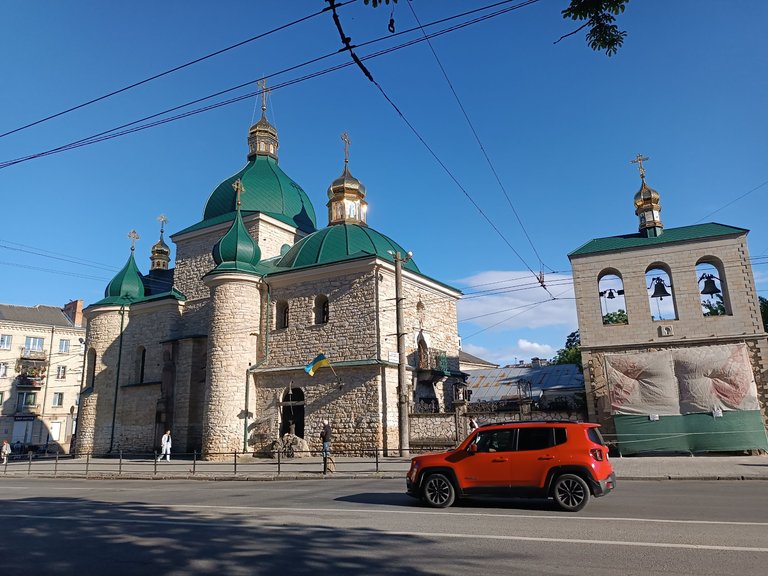
І на завершення подорожі ми підійшли до цікавої кам'яної церкви. Стін з такого матеріалу у нашій архітектурі дуже мало! Зазвичай будували з тесаного пісковика або з цегли і покривали штукатуркою.
А тут ми маємо щось схоже на середньовічний замок! І це не дивно, бо храм дійсно належав до оборонних мурів і мав призначення захищати напади ворогів.
Він побудований на початку 1600-х.
За ці століття багато разів доповнювався, реставрувався. Його цікавинкою є напівкруглі вежі, що випинають із фасадів.
Всередину не потрапили, бо було зачинено.
Та і нам пора додому.

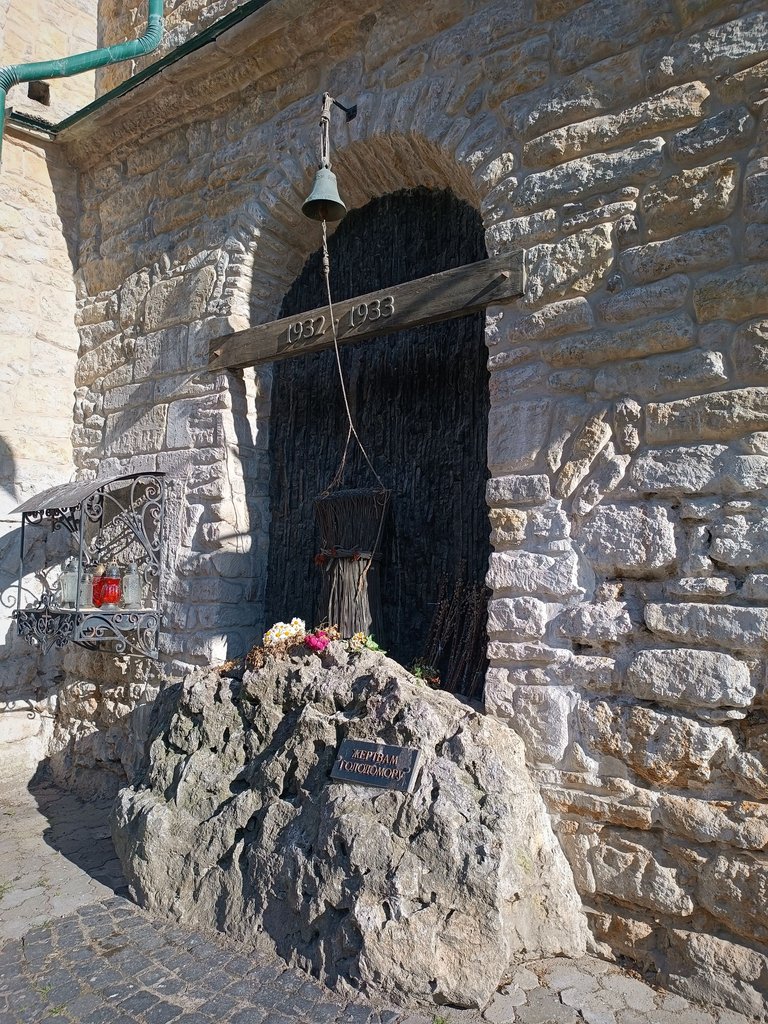
Monument to the victims of the Holodomor. This sheaf is a reminder of terrible times. In the Western part of the country, which was under the power of Poland, there was no famine in 1932-33. Therefore, people collected products and wanted to give them to their brothers from Soviet Ukraine, but this was impossible due to the opposition of the Soviet authorities. Descendants of Soviet orcs are now destroying modern Ukraine!
Пам'ятник жертвам Голодомору. Цей сніп — нагадування про жахливі часи. У Західній частині країни, що перебувала під владою Польщі, не було голодомору 1932-33 років. Тому люди збирали продукти і хотіли передати своїм братам із Великої України, але це було неможливо через протидію радянської влади. Нащадки радянських орків тепер знищують сучасну Україну!
Основа пам'ятника зроблена з... рифів. Подільські Товтри - це пасмо, яке тягнеться на багато кілометрів Тернопільської області, воно складене з рифів древнього моря! Пагорби покриті лісом, та є місця, де рифи виходять на поверхню. Цей матеріал не годиться для складного будівництва, бо дуже твердий. Але тут виглядає доречно.


I hope you enjoyed this cozy colorful city? Be sure to visit!
Thanks for your visit, support, votes and comments!
Stay close. Stay with Ukraine! 💙💛💙💛

Congratulations, your post has been added to WorldMapPin! 🎉
Did you know you have your own profile map?
And every post has their own map too!
Want to have your post on the map too?
Thanks a lot 💛💙💛💙